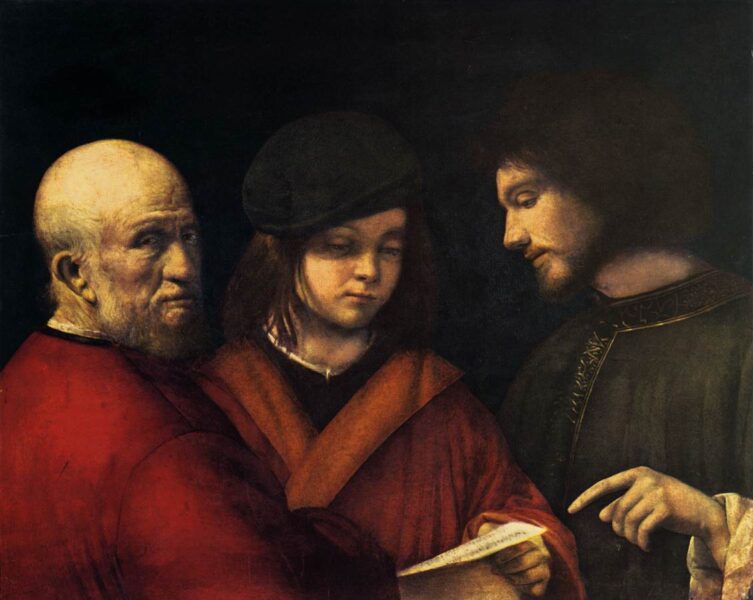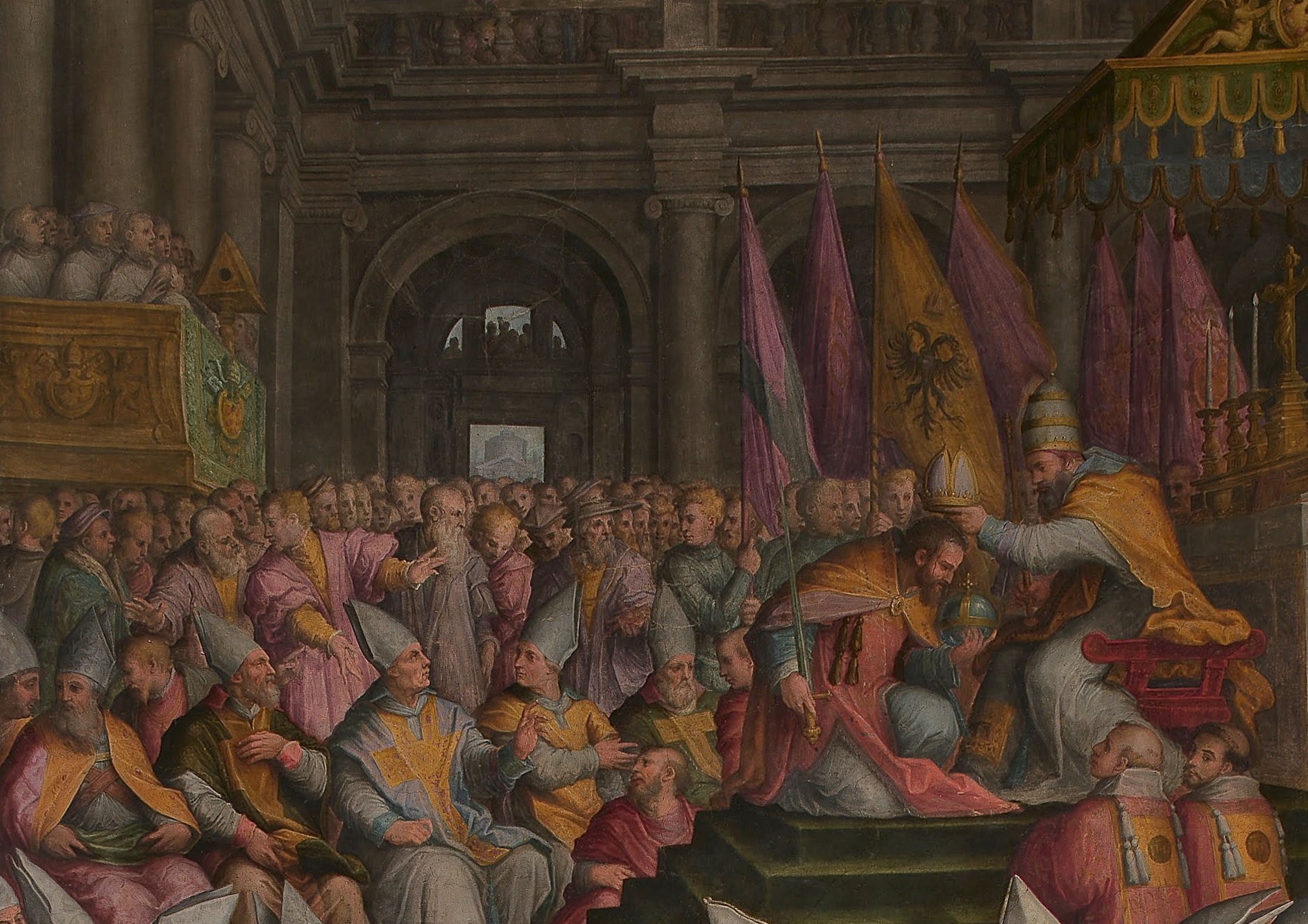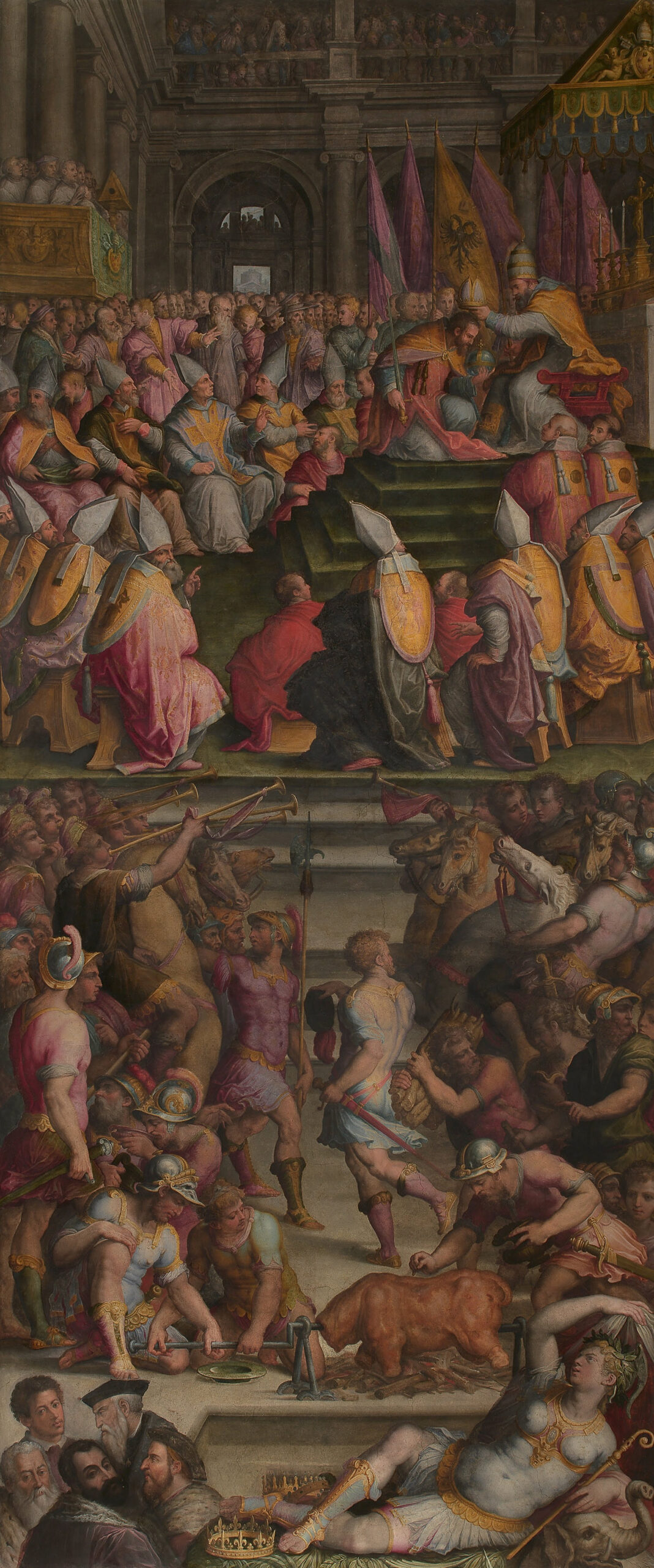|
Getting your Trinity Audio player ready...
|
On June 27, 1574, in Florence, one of the greatest figures of the Italian Renaissance passed away: Giorgio Vasari, an architect, painter, and Italian art historian.
Born in 1511 in Arezzo, Giorgio Vasari was deeply influenced by the works of Michelangelo († 1564), Andrea del Sarto († 1531), and the early manifestations of Mannerism. In addition to painting, he distinguished himself in architecture, contributing to prestigious projects under Cosimo I de’ Medici in Florence, such as the Uffizi and Palazzo Vecchio. His monumental literary work, Lives of the Most Eminent Painters, Sculptors and Architects, stands as a cornerstone in art historiography, offering meticulous insights into the lives and works of approximately 160 artists.
Let’s now consider a musical commemoration, marking 450 years since his passing, through two paintings: one directly crafted by Giorgio Vasari and the other illuminated by his commentary.
The first, created by the Arezzo painter between 1556 and 1562, depicts the ceremony where Pope Clement VII crowns Emperor Charles V († 1588).
This work, preserved at Palazzo Vecchio or della Signoria in Florence, represents what happened on February 24, 1530, in Bologna’s basilica of San Petronio. In his Ragionamenti, Vasari precisely describes the event he witnessed, suggesting that he relied on the “Storie” by Paolo Giovio († 1568) rather than personal recollection. The depiction aims to celebrate the Medici family, emphasizing their importance through the imperial coronation and reaffirming the ties with the Habsburgs. Despite setting the scene at San Petronio, the Arezzo artist adapts the church’s architecture to his preferred style. Notably, the choir loft is visible in the top left corner, with a figure seemingly conducting time in the foreground.
What makes this work even more evocative is Vasari’s mention of the music, performed by the imperial and papal choirs, accompanying the solemn Mass: “with marvelous music in double choir, which Mass was celebrated by the Pope, and the Emperor, in sacred vestments, served him at the altar.”[1] This connection between music and painting underscores the importance of synesthesia in Renaissance art, where different artistic expressions intertwined to create a multi-sensory experience.
Yet, Vasari’s affinity for music extends beyond his brushstrokes. In his commentary on a painting by Sebastiano del Piombo († 1547), Vasari praises Philippe Verdelot († 1552) as “a most excellent musician, who was then chapel-master in S. Marco” in Venice.[2] However, the painting in question is actually The Three Ages of Man, now attributed to Giorgione († 1510), also Venetian like Sebastiano del Piombo.

While the elderly figure may depict Adrian Willaert († 1562) or Heinrich Isaac († 1517), the identification of the central character remains uncertain. These three musicians, born in the Low Countries, left a profound mark on Italian soil, highlighting Vasari’s keen sensitivity to music’s interconnectedness with painting.
This sensitivity resonates throughout Vasari’s documentation of Renaissance painters’ musical interests in his Lives. He not only chronicles their works and lives but also unveils their musical talents and passions.
Andrea del Verrocchio († 1488) “was in his day a goldsmith, a master of perspective, a sculptor, a woodcarver, a painter, and a musician.” Leonardo da Vinci († 1519) was a virtuoso player of the bowed lyre, and “wherefore he sang divinely to that instrument, improvising upon it,” at the court of Ludovico Sforza († 1508) in Milan, “with which he surpassed all the musicians who had come together there to play.”
Timoteo Viti († 1523) “delighted in playing every sort of instrument, and particularly the lyre, to which he sang, improvising upon it with extraordinary grace.” Fra Bartolomeo († 1517) “gave some attention to the study of music.” Il Sodoma († 1549) sang “to the lute with no little facility.” Speaking of Giorgione († 1510), it is reported that “the sound of the lute gave him marvelous pleasure, so that in his day he played and sang so divinely that he was often employed for that purpose at various musical assemblies and gatherings of noble persons.”
According to Vasari,
the first profession of Sebastiano [del Piombo] so many declare, was not painting, but music, since, besides being a singer, he much delighted to play various kinds of instruments, and particularly the lute, because on that instrument all the parts can be played, without any accompaniment. This art made him for a time very dear to the gentlemen of Venice, with whom, as a man of talent, he always associated on intimate terms.
Parmigianino († 1540) “delighted to play on the lute, and had a hand and a genius so well suited to it that he was no less excellent in this than in painting.” Rosso Fiorentino († 1540) “was an excellent musician.” Matteo del Nassaro († 1547), a carver from Verona, “gave much attention in his early childhood not only to design, but also to music, in which he became excellent, having had as his masters in that study Marco Carrà and Il Tromboncino, both Veronese, who were then in the service of the Marquis of Mantua.” Tintoretto († 1594) “has delighted in all the arts, and particularly in playing various musical instruments.”
In conclusion, as we commemorate 450 years since Giorgio Vasari’s passing, it’s imperative to celebrate not only his remarkable artistic and historiographic legacy but also his role in championing an inclusive vision of art, embracing all its expressive forms, including music. In his time, creative boundaries were fluid, allowing music and painting to engage in a dialogue that enriched each other, crafting a vibrant cultural tapestry.
[1] G. Vasari, Lo Zibaldone, Roma 1938, p. 99; our translation.



